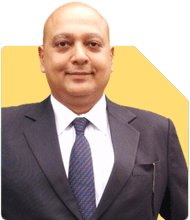28-Year-Old With Stable Job Seeks Advice: How Can I Finish My Home Loan Faster?
Ramalingam Kalirajan |7758 Answers |Ask -Follow
Mutual Funds, Financial Planning Expert - Answered on Dec 30, 2024
He has an MBA in finance from the University of Madras and is a certified financial planner.
He is the director and chief financial planner at Holistic Investment, a Chennai-based firm that offers financial planning and wealth management advice.... more

How to finish home loan faster
1. Start a SIP in Equity Mutual Funds
Invest monthly in a diversified equity mutual fund for a period of 7+ years.
Equity funds historically offer higher returns over long periods, outpacing home loan interest rates.
Align your SIP amount with your financial capacity, ensuring consistency.
2. Time the Loan Closure with SIP Maturity
Use the maturity value of the SIP to make a lump sum prepayment towards your loan.
Ensure the investment horizon of the SIP is long enough to mitigate market volatility.
A 7-10 year SIP period can yield significant growth due to the power of compounding.
3. Continue Regular EMI Payments
Maintain your regular EMIs while running the SIP.
Do not compromise on timely loan payments to avoid penalties.
The parallel strategy reduces your loan tenure effectively when executed with discipline.
4. Focus on High-Interest Loan Years
Prepayments made during the initial years have the highest impact on interest savings.
Coordinate your SIP maturity during this time to maximise loan repayment benefits.
5. Leverage Tax Benefits on Both Ends
Claim tax deductions under Section 80C and Section 24(b) for home loan payments.
Equity mutual funds held for over a year qualify for long-term capital gains tax benefits.
Use the tax savings to either increase your SIP or make additional prepayments.
6. Step-Up Your SIP Amount Annually
Increase your SIP amount by 10-15% every year to match income growth.
A higher SIP contribution accelerates wealth accumulation for loan repayment.
7. Avoid Premature Withdrawal from SIP
Do not redeem SIP investments prematurely unless used for loan closure.
The longer you stay invested, the higher the growth potential.
8. Track Loan Tenure and SIP Performance
Regularly review your loan outstanding and SIP performance.
Align your repayment strategy with market conditions and financial goals.
9. Focus on Financial Discipline
Avoid new liabilities while managing your home loan and SIP.
Stick to a budget that prioritises both EMI payments and SIP contributions.
10. Plan for Surplus Investments
Channel any bonuses, tax refunds, or additional income into either SIPs or loan prepayments.
Small additional investments can significantly enhance your repayment capability.
Final Insights
Starting a parallel SIP in equity funds while paying regular EMIs creates a structured pathway to close your home loan early. Over time, the compounded growth from your SIP can ease the financial burden of a lump sum loan prepayment. This balanced strategy ensures financial growth and reduced debt simultaneously.
Best Regards,
K. Ramalingam, MBA, CFP,
Chief Financial Planner,
www.holisticinvestment.in
https://www.youtube.com/@HolisticInvestment
You may like to see similar questions and answers below
Gaurav Mohta | Answer |Ask -Follow
Answered on Aug 02, 2022
Gaurav Mohta | Answer |Ask -Follow
Answered on Aug 02, 2022
Ramalingam Kalirajan |7758 Answers |Ask -Follow
Mutual Funds, Financial Planning Expert - Answered on Jul 10, 2024
Rajesh Kumar Singh |47 Answers |Ask -Follow
IIT-JEE, GATE Expert - Answered on Feb 01, 2025
Dr Nagarajan Jsk |224 Answers |Ask -Follow
NEET, Medical, Pharmacy Careers - Answered on Feb 01, 2025
Dr Nagarajan Jsk |224 Answers |Ask -Follow
NEET, Medical, Pharmacy Careers - Answered on Feb 01, 2025
Radheshyam Zanwar |1168 Answers |Ask -Follow
MHT-CET, IIT-JEE, NEET-UG Expert - Answered on Feb 01, 2025
Sushil Sukhwani |576 Answers |Ask -Follow
Study Abroad Expert - Answered on Feb 01, 2025
Sushil Sukhwani |576 Answers |Ask -Follow
Study Abroad Expert - Answered on Feb 01, 2025
Sushil Sukhwani |576 Answers |Ask -Follow
Study Abroad Expert - Answered on Feb 01, 2025
Anil Rego |384 Answers |Ask -Follow
Financial Planner - Answered on Feb 01, 2025
Anil Rego |384 Answers |Ask -Follow
Financial Planner - Answered on Feb 01, 2025
Anil Rego |384 Answers |Ask -Follow
Financial Planner - Answered on Feb 01, 2025
























